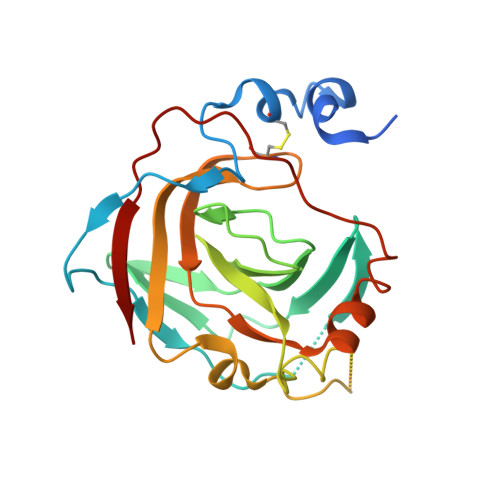Structure-Activity Relationship for Sulfonamide Inhibition of Helicobacter pylori alpha-Carbonic Anhydrase.
Modak, J.K., Liu, Y.C., Supuran, C.T., Roujeinikova, A.(2016) J Med Chem 59: 11098-11109
- PubMed: 28002963
- DOI: https://doi.org/10.1021/acs.jmedchem.6b01333
- Primary Citation of Related Structures:
5TT3, 5TT8, 5TUO, 5TV3 - PubMed Abstract:
α-Carbonic anhydrase of Helicobacter pylori (HpαCA) plays an important role in the acclimation of this oncobacterium to the acidic pH of the stomach. Sulfonamide inhibitors of HpαCA possess anti-H. pylori activity. The crystal structures of complexes of HpαCA with a family of acetazolamide-related sulfonamides have been determined. Analysis of the structures revealed that the mode of sulfonamide binding correlates well with their inhibitory activities. In addition, comparisons with the corresponding inhibitor complexes of human carbonic anhydrase II (HCAII) indicated that HpαCA possesses an additional, alternative binding site for sulfonamides that is not present in HCAII. Furthermore, the hydrophobic pocket in HCAII that stabilizes the apolar moiety of sulfonamide inhibitors is replaced with a more open, hydrophilic pocket in HpαCA. Thus, our analysis identified major structural features can be exploited in the design of selective and more potent inhibitors of HpαCA that may lead to novel antimicrobials.
Organizational Affiliation:
Department of Microbiology, Monash University , Clayton, Victoria 3800, Australia.


















